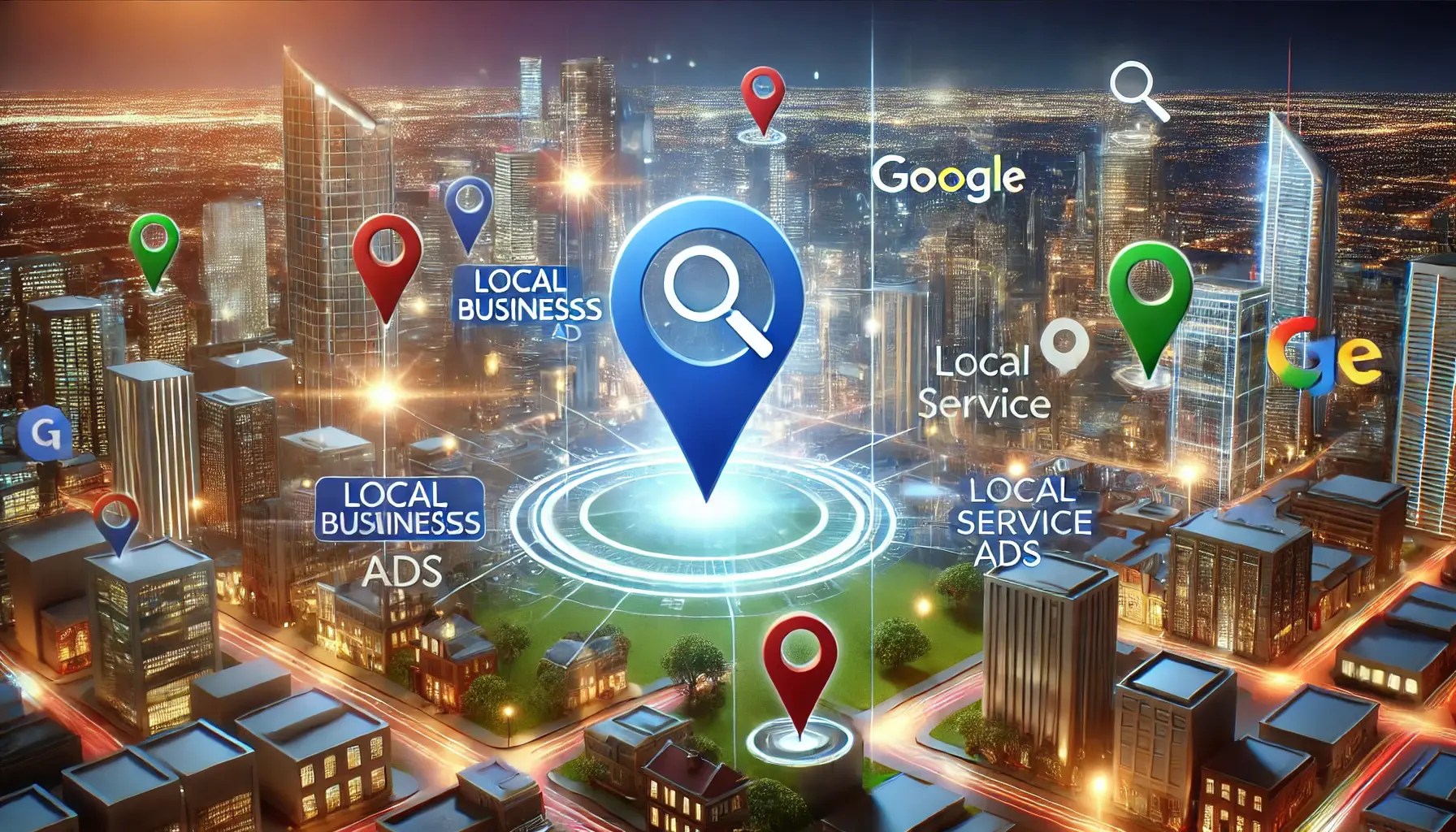In today’s digital era, effective marketing is essential for doctors and healthcare providers to reach new patients and grow their practices.
With the rise in online search behavior, running Google Ads can help medical professionals reach potential patients searching for their services.
Google Ads offers a powerful platform to target specific audiences, enhance visibility, and drive patient acquisition.
This guide will explore how Google Ads can transform healthcare marketing, providing practical strategies and actionable insights tailored to medical practices.
Whether you’re a healthcare marketer or a medical professional looking to expand your reach, understanding the role of Google Ads in healthcare marketing is the first step toward success.
- Understanding the Role of Google Ads in Healthcare Marketing
- Setting Up Effective Google Ads Campaigns for Medical Practices
- Optimizing Google Ads Performance for Healthcare Providers
- Ensuring Compliance with Healthcare Advertising Regulations
- Measuring the ROI of Google Ads in Healthcare Marketing
- Maximizing the Potential of Google Ads for Healthcare Marketing
- Frequently Asked Questions about Google Ads for Doctors
Understanding the Role of Google Ads in Healthcare Marketing
Google Ads plays a pivotal role in modern healthcare marketing by enabling doctors to connect with patients actively seeking medical care.
Unlike traditional advertising methods, Google Ads allows precise targeting, ensuring that your message reaches the right audience at the right time.

Digital advertising bridges the gap between doctors and patients, enhancing healthcare outreach.
The Importance of Digital Advertising for Doctors
Digital advertising is no longer optional for healthcare professionals.
With most patients using the internet to research healthcare providers, having a strong online presence is crucial.
Google Ads ensures that your practice appears at the top of search results when potential patients search for services like yours.
For example, if someone searches for ‘pediatrician near me,’ your ad can appear prominently, increasing the chances of attracting a new patient.

Google Ads streamlines patient acquisition by connecting medical professionals with prospective patients effectively.
How Google Ads Enhances Patient Acquisition
Google Ads allows you to target specific demographics, such as location, age, and medical needs, ensuring your campaigns resonate with the audience most likely to need your services.
This precision targeting translates to higher conversion rates and better use of your marketing budget.
Additionally, Google Ads enables retargeting, helping you stay connected with potential patients who have interacted with your website but haven’t scheduled an appointment yet.
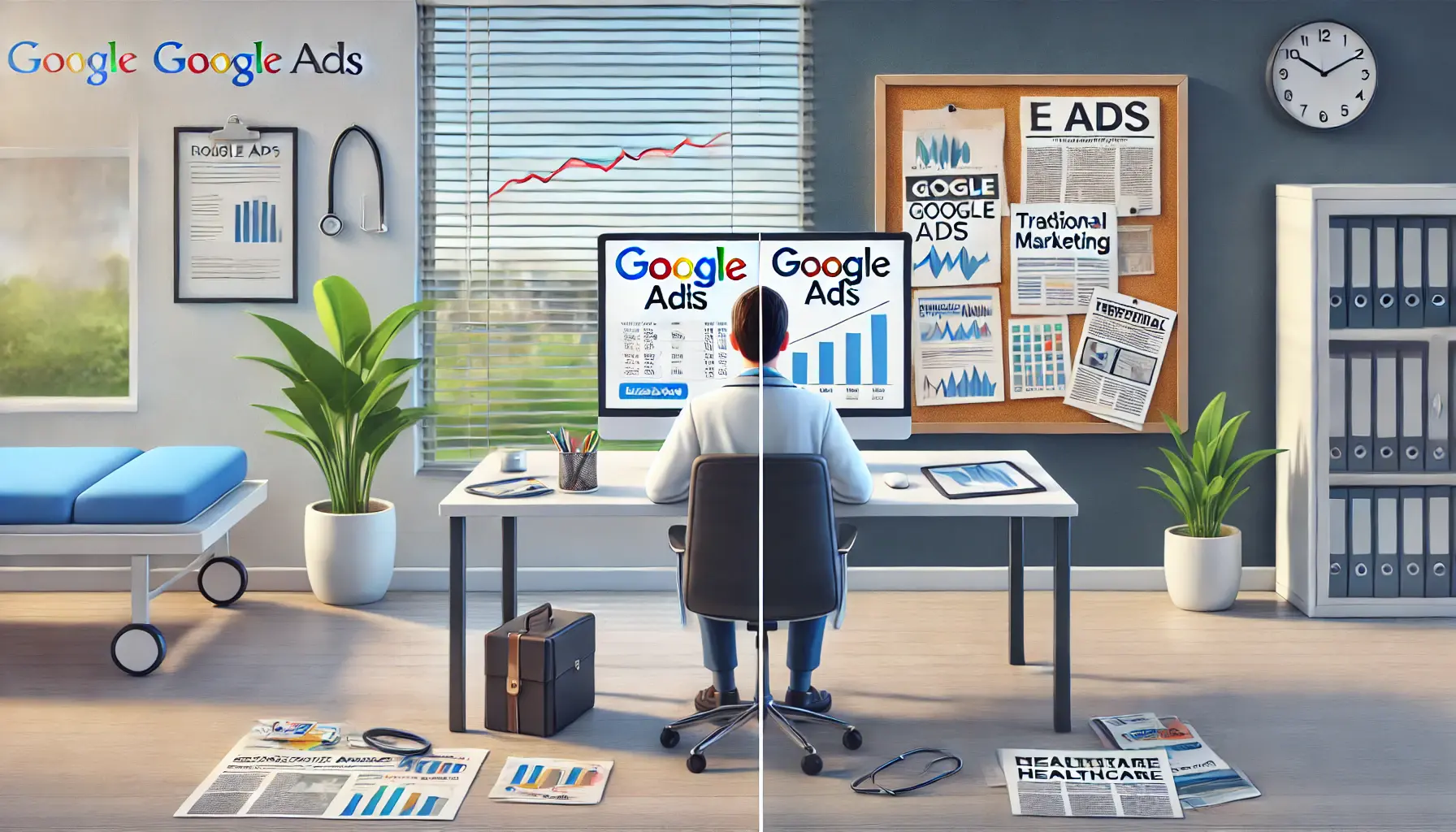
Google Ads vs. traditional marketing: A clear comparison in healthcare outreach.
Comparing Google Ads to Traditional Marketing Methods
Traditional marketing methods like flyers and newspaper ads lack the precision and reach of Google Ads.
While these methods target a broad audience, Google Ads focuses on individuals actively searching for healthcare services, making it more effective and cost-efficient.
- Cost-effectiveness: Pay only for clicks or impressions, ensuring a better return on investment.
- Measurable results: Track campaign performance in real-time.
- Broader reach: Access a global audience or focus on specific local markets.
By understanding the unique benefits of Google Ads, doctors can effectively harness its potential to attract more patients and grow their practice.
Google Ads provides doctors with a transformative tool to connect with patients actively searching for healthcare services, ensuring precision targeting and measurable results.

Streamlining digital advertising: Setting up Google Ads campaigns tailored for medical practices.
Setting Up Effective Google Ads Campaigns for Medical Practices
Establishing a successful Google Ads campaign is crucial for doctors aiming to attract new patients and enhance their online presence.
A well-structured campaign ensures that your medical services reach the right audience at the right time.

Precision marketing: Identifying target audiences for effective healthcare outreach.
Identifying Target Audiences in Healthcare
Understanding your target audience is the first step in creating an effective campaign.
Consider factors such as:
- Demographics: Age, gender, and income levels of potential patients.
- Location: Geographical areas where your services are most needed.
- Interests and Behaviors: Health concerns and online behaviors of your prospective patients.
By defining these parameters, you can tailor your ads to resonate with those seeking your medical services.

Keyword research: A crucial step in optimizing digital ads for medical services.
Selecting Relevant Keywords for Medical Services
Choosing the right keywords is essential for your ads to appear in relevant search results.
Use tools like Google’s Keyword Planner to identify the terms patients use to find medical services.
Focus on:
- High-Intent Keywords: Phrases indicating immediate need, such as ‘book doctor appointment near me.’
- Long-Tail Keywords: Specific terms like ‘pediatric cardiologist in [City].’
- Negative Keywords: Exclude terms unrelated to your services to prevent irrelevant clicks.
Regularly updating your keyword list ensures alignment with current search trends and patient needs.

Effective ad copy: The art of engaging healthcare audiences with compelling messaging.
Crafting Compelling Ad Copy for Healthcare Professionals
Your ad copy should clearly communicate the value of your services and include a strong call to action.
Effective ad copy features:
- Clear Messaging: Highlight unique services and expertise.
- Patient-Centric Language: Address patient needs and concerns directly.
- Urgency: Encourage prompt action with phrases like ‘Schedule an Appointment Today.’
Personalizing your ads fosters trust and encourages potential patients to choose your practice.
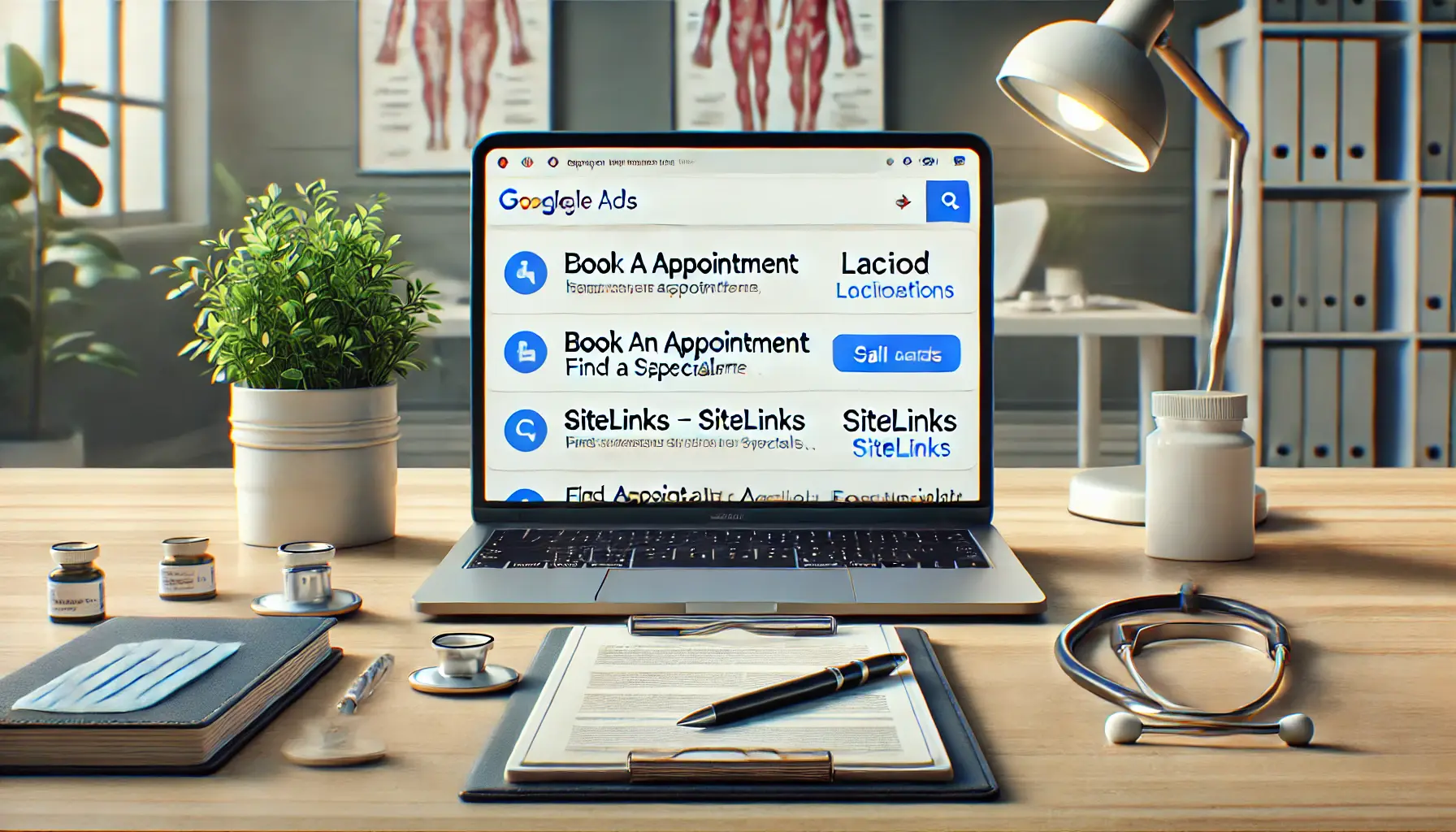
Ad extensions: Enhancing healthcare ads with actionable and detailed information.
Utilizing Ad Extensions to Provide Additional Information
Ad extensions enhance your ads by providing extra information, increasing visibility, and improving click-through rates.
Consider using:
- Location Extensions: Display your practice’s address to attract local patients.
- Call Extensions: Include a phone number for easy contact.
- Sitelink Extensions: Direct users to specific pages on your website, such as appointment booking or service details.
Implementing these extensions makes it easier for potential patients to engage with your practice.
By meticulously setting up your Google Ads campaign with these strategies, you can effectively reach and convert potential patients, thereby growing your medical practice.
Effective Google Ads campaigns begin with identifying the right audience, selecting relevant keywords, and crafting compelling ad copy tailored to patient needs.
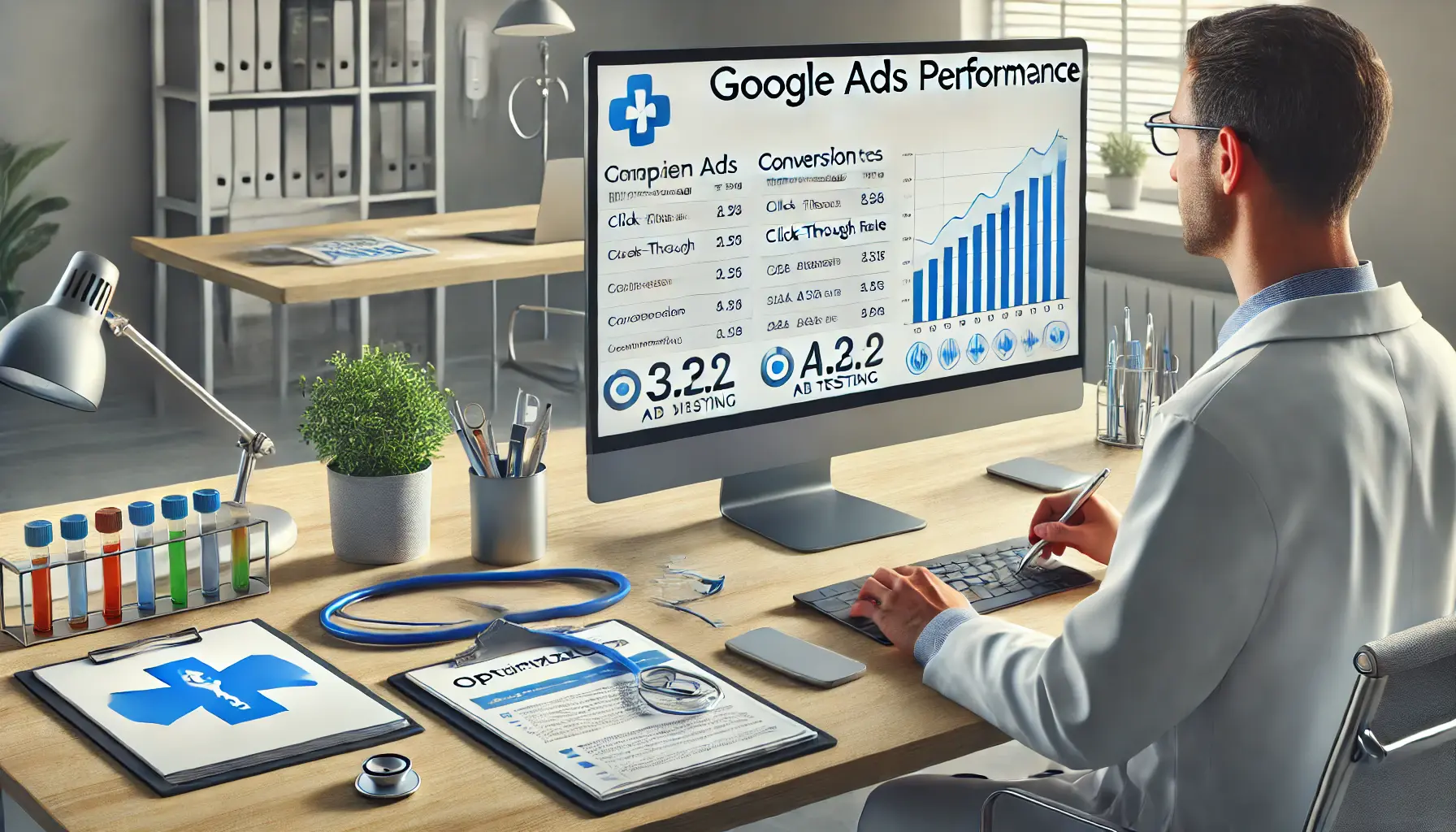
Performance optimization: Enhancing Google Ads campaigns for healthcare providers.
Optimizing Google Ads Performance for Healthcare Providers
Once your Google Ads campaign is up and running, continuous optimization is essential to maximize its effectiveness.
By refining various elements of your campaign, you can enhance visibility, increase patient engagement, and achieve a higher return on investment.

A/B testing: Enhancing ad performance through data-driven comparisons in healthcare marketing.
Implementing A/B Testing for Ad Variations
A/B testing, or split testing, involves comparing two versions of an ad to determine which performs better.
For doctors, this could mean testing different headlines, ad copy, or call-to-action phrases.
By analyzing the results, you can identify the most compelling messages that resonate with potential patients.
For example, testing ‘Book Your Appointment Today’ against ‘Schedule Your Consultation Now’ can reveal which call-to-action drives more engagement.
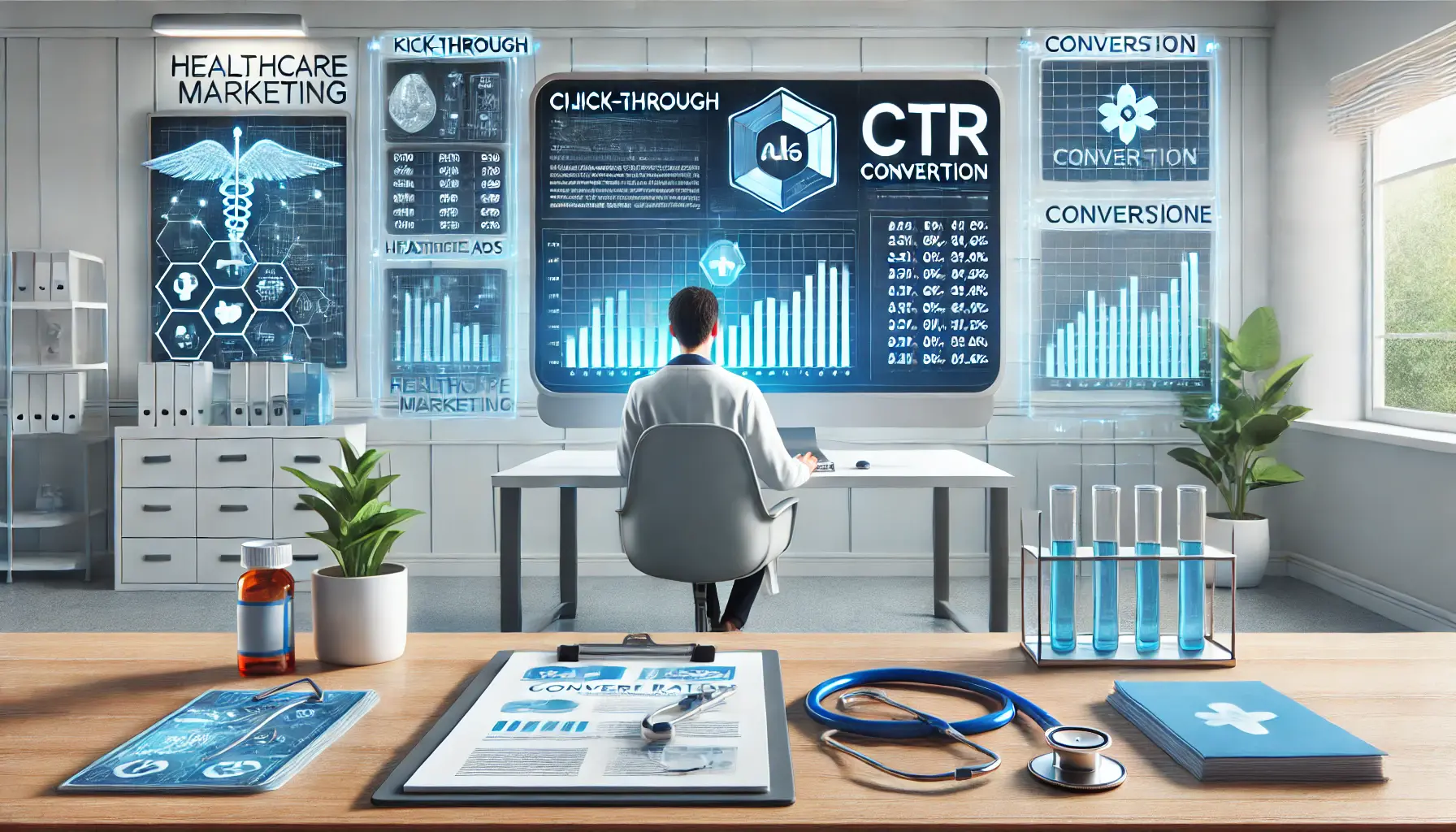
Tracking performance: Key metrics like click-through and conversion rates in healthcare marketing.
Monitoring Key Metrics: Click-Through and Conversion Rates
Regularly tracking key performance indicators such as click-through rates (CTR) and conversion rates is vital.
A high CTR indicates that your ad is appealing to users, while a strong conversion rate shows that visitors are taking desired actions, like booking appointments.
Utilizing Google Ads’ analytics tools allows you to monitor these metrics and make informed decisions to improve your campaign’s performance.
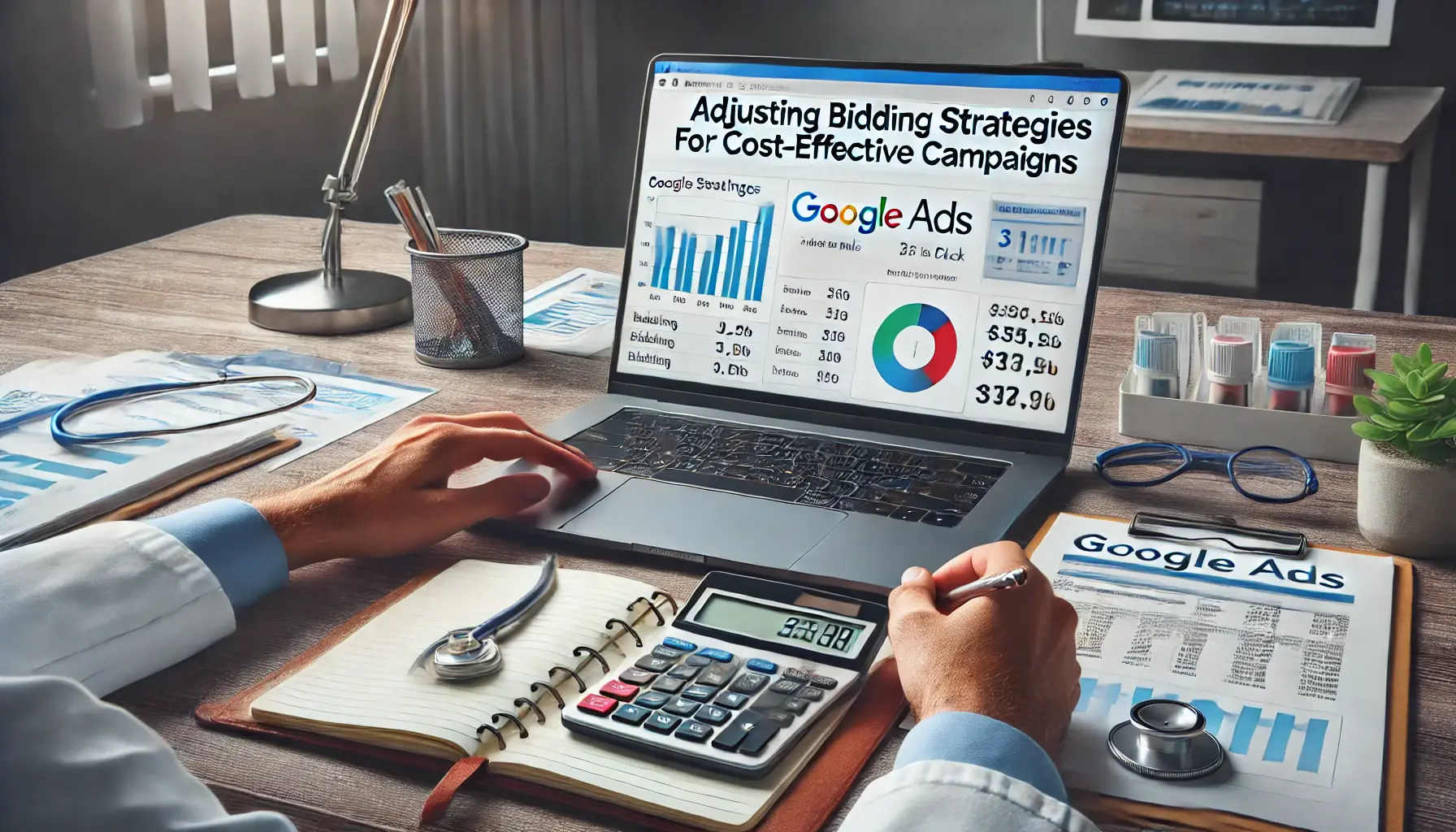
Optimizing budgets: Strategic bidding adjustments for cost-effective healthcare campaigns.
Adjusting Bidding Strategies for Cost-Effective Campaigns
Effective bidding strategies ensure that your ads achieve optimal placement without overspending.
Consider:
- Manual Bidding: Allows precise control over bids for specific keywords.
- Automated Bidding: Uses algorithms to adjust bids based on campaign goals.
Regularly reviewing and adjusting your bidding approach helps maintain cost-effectiveness and competitiveness in the healthcare market.

Engaging patients: Optimizing landing pages for better healthcare interactions.
Enhancing Landing Pages to Improve Patient Engagement
Your landing page is often the first interaction potential patients have with your practice.
Ensuring it is user-friendly and informative can significantly impact engagement.
Focus on:
- Relevance: Align landing page content with ad messages to meet patient expectations.
- Clarity: Use clear headings and concise information to facilitate easy navigation.
- Call-to-Action: Include prominent buttons or links encouraging actions like ‘Book an Appointment.’
By optimizing your landing pages, you create a seamless experience that encourages potential patients to choose your services.
By diligently optimizing your Google Ads campaigns, you can effectively reach and convert potential patients, thereby expanding your healthcare practice’s reach and impact.
Continuous optimization through A/B testingA method of comparing two versions of content to see which performs better., tracking metrics, and refining bidding strategies ensures sustained success in Google Ads campaigns.

Compliance matters: Adhering to healthcare advertising regulations for ethical marketing.
Ensuring Compliance with Healthcare Advertising Regulations
When utilizing Google Ads for healthcare marketing, it’s imperative to adhere to specific regulations to maintain compliance and protect patient information.
Understanding these guidelines helps prevent legal issues and builds trust with your audience.
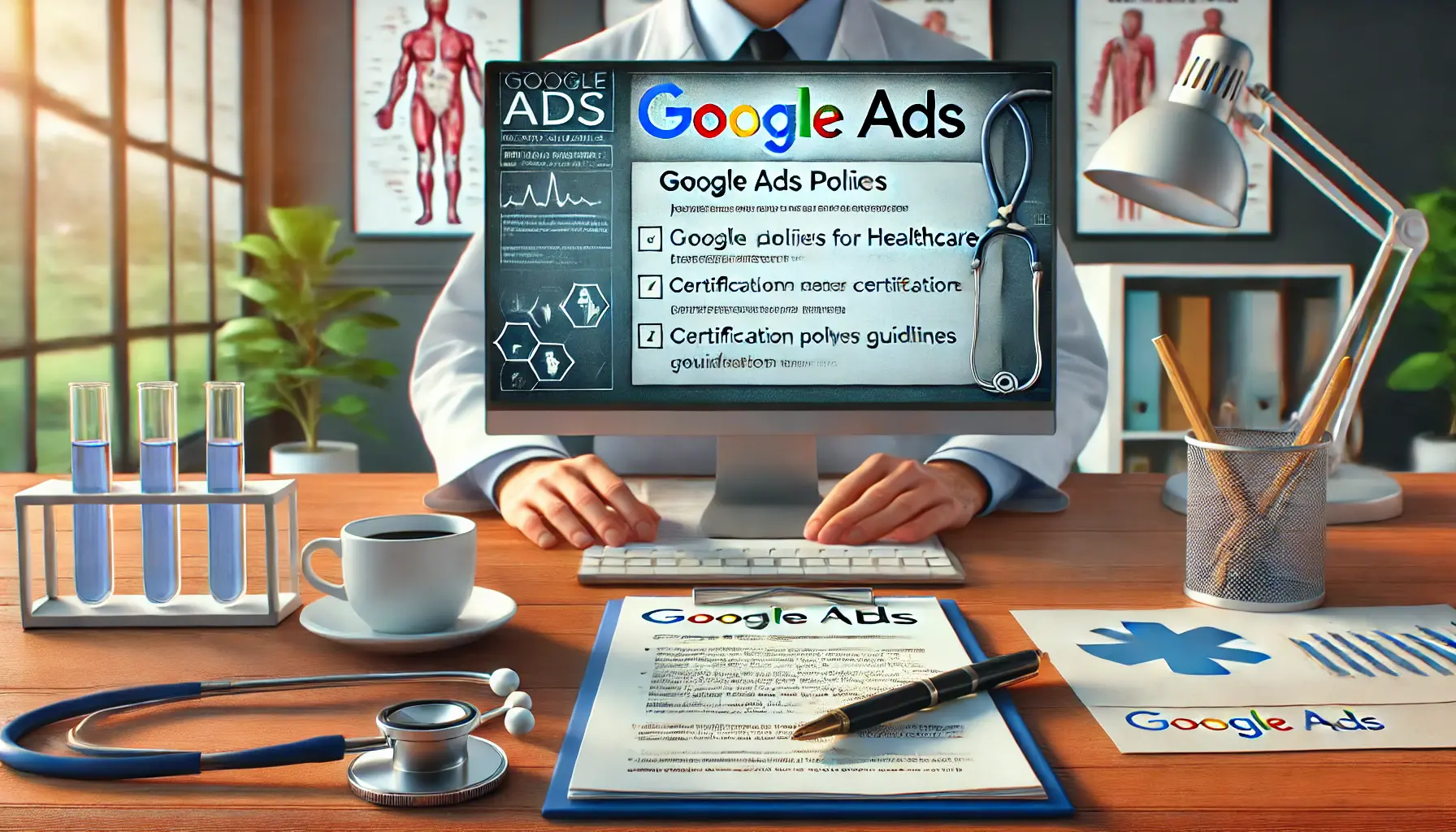
Navigating policies: Understanding Google Ads guidelines for healthcare marketing.
Google Ads Policies for Healthcare and Medicine
Google enforces strict policies regarding healthcare-related advertisements.
Advertisers must ensure that their ads and landing pages comply with applicable laws and industry standards.
Key considerations include:
- Certification Requirements: Certain healthcare content requires certification to advertise on Google. For instance, promoting prescription drugs necessitates certification in specific countries.
- Restricted Products and Services: Some healthcare products and services, such as unapproved pharmaceuticals and speculative medical treatments, are prohibited from advertising.
- Geographical Restrictions: Advertising certain healthcare services is restricted in specific regions. Advertisers must be aware of and comply with local regulations.
Regularly reviewing Google’s Healthcare and Medicines Policy ensures that your campaigns remain compliant.

Ensuring privacy: The role of HIPAA compliance in healthcare digital advertising.
HIPAA Compliance in Digital Advertising
The Health Insurance Portability and Accountability Act (HIPAAThe Health Insurance Portability and Accountability Act, a US law protecting sensitive patient information.) sets national standards for protecting sensitive patient information.
When running digital ads, healthcare providers must ensure that:
- Protected Health Information (PHI): Ads do not disclose PHI without patient consent. This includes any information that can identify a patient or details their health condition.
- Business Associate Agreements (BAAs): Engaging with third-party services that handle PHI requires a BAA to ensure they comply with HIPAA standards.
- Data Tracking and Analytics: Utilizing tracking tools like cookies must not compromise patient privacy. Ensure that data collection methods align with HIPAA regulations.
Maintaining HIPAA compliance in advertising protects patient confidentiality and upholds your practice’s integrity.

Protecting patient privacy: Ensuring secure data management in healthcare.
Managing Patient Data and Privacy
Handling patient data responsibly is crucial in healthcare advertising.
Best practices include:
- Data Minimization: Collect only information necessary for your campaign to minimize the chances of data breaches.
- Secure Storage: Implement strong security measures to protect stored patient data from unauthorized access.
- Transparent Privacy Policies: Clearly communicate how patient data is used and protected, which builds trust and ensures compliance with privacy laws.
By prioritizing data privacy, you demonstrate respect for patients’ rights and adherence to regulations.
Following these regulations will not only ensure compliance but also build trust and enhance your reputation as a healthcare provider.
Adhering to Google Ads policies, HIPAA standards, and privacy regulations is critical for maintaining trust and avoiding legal complications.

Tracking success: Measuring the ROI of Google Ads in healthcare marketing.
Measuring the ROI of Google Ads in Healthcare Marketing
Understanding the return on investment (ROI) for your Google Ads campaigns is crucial for doctors aiming to assess the effectiveness of their healthcare marketing efforts.
By accurately measuring ROI, you can determine the profitability of your campaigns and make informed decisions to enhance patient acquisition strategies.

Measuring success: Defining KPIs to optimize healthcare advertising performance.
Defining Key Performance Indicators (KPIs) in Healthcare Advertising
Identifying and tracking specific KPIs is essential to evaluate the success of your Google Ads campaigns.
Important KPIs for healthcare providers include:
- Cost Per Click (CPC): The amount paid for each click on your ad, indicating the efficiency of your ad spend.
- Click-Through Rate (CTR): The percentage of ad impressions that result in clicks, reflecting ad relevance and appeal.
- Conversion Rate: The proportion of clicks that lead to desired actions, such as appointment bookings, showing the effectiveness of your landing pages and overall campaign.
- Cost Per Acquisition (CPA): The average cost to acquire a new patient through your ads, helping assess the financial viability of your campaigns.
Regularly monitoring these KPIs enables doctors to gauge campaign performance and identify areas for improvement.

Tracking patient acquisition: Using analytics tools for optimized healthcare marketing.
Utilizing Analytics Tools to Track Patient Acquisition
Employing robust analytics tools is vital for tracking patient acquisition and understanding user behavior.
Tools such as:
- Google Analytics: Provides insights into website traffic, user behavior, and conversion tracking, allowing for data-driven decisions.
- Call Tracking Software: Monitors phone calls generated from ads, offering a comprehensive view of lead sources and patient inquiries.
- Customer Relationship Management (CRM) Systems: Helps manage patient interactions and track the patient journey from initial contact to appointment scheduling.
Integrating these tools into your marketing strategy facilitates a comprehensive analysis of patient acquisition channels and campaign effectiveness.

Measuring success: Calculating ROI for optimized medical practice campaigns.
Calculating ROI for Medical Practice Campaigns
To calculate the ROI of your Google Ads campaigns, use the following formula:
ROI = (Revenue from Ads – Cost of Ads) / Cost of Ads × 100%
For example, if your campaign generated $10,000 in revenue and the total ad spend was $2,000, the ROI would be:
ROI = ($10,000 – $2,000) / $2,000 × 100% = 400%
This indicates a 400% return on your advertising investment, signifying a highly profitable campaign.

Optimizing strategies: Using ROI data to refine healthcare marketing efforts.
Interpreting ROI Data to Enhance Marketing Strategies
Analyzing ROI data allows healthcare providers to refine their marketing strategies by:
- Identifying High-Performing Campaigns: Allocate more resources to campaigns that yield higher ROI.
- Optimizing Underperforming Ads: Adjust ad copy, targeting, or bidding strategies for campaigns with lower ROI.
- Budget Allocation: Distribute marketing budgets effectively across various channels based on ROI insights.
- Enhancing Patient Targeting: Use data to focus on demographics and behaviors that lead to higher patient acquisition rates.
By leveraging ROI analysis, doctors can make informed decisions to optimize their Google Ads campaigns, ultimately improving patient acquisition and practice growth.
Tracking ROI and interpreting data helps allocate resources to high-performing campaigns, ensuring cost-effective patient acquisition strategies.
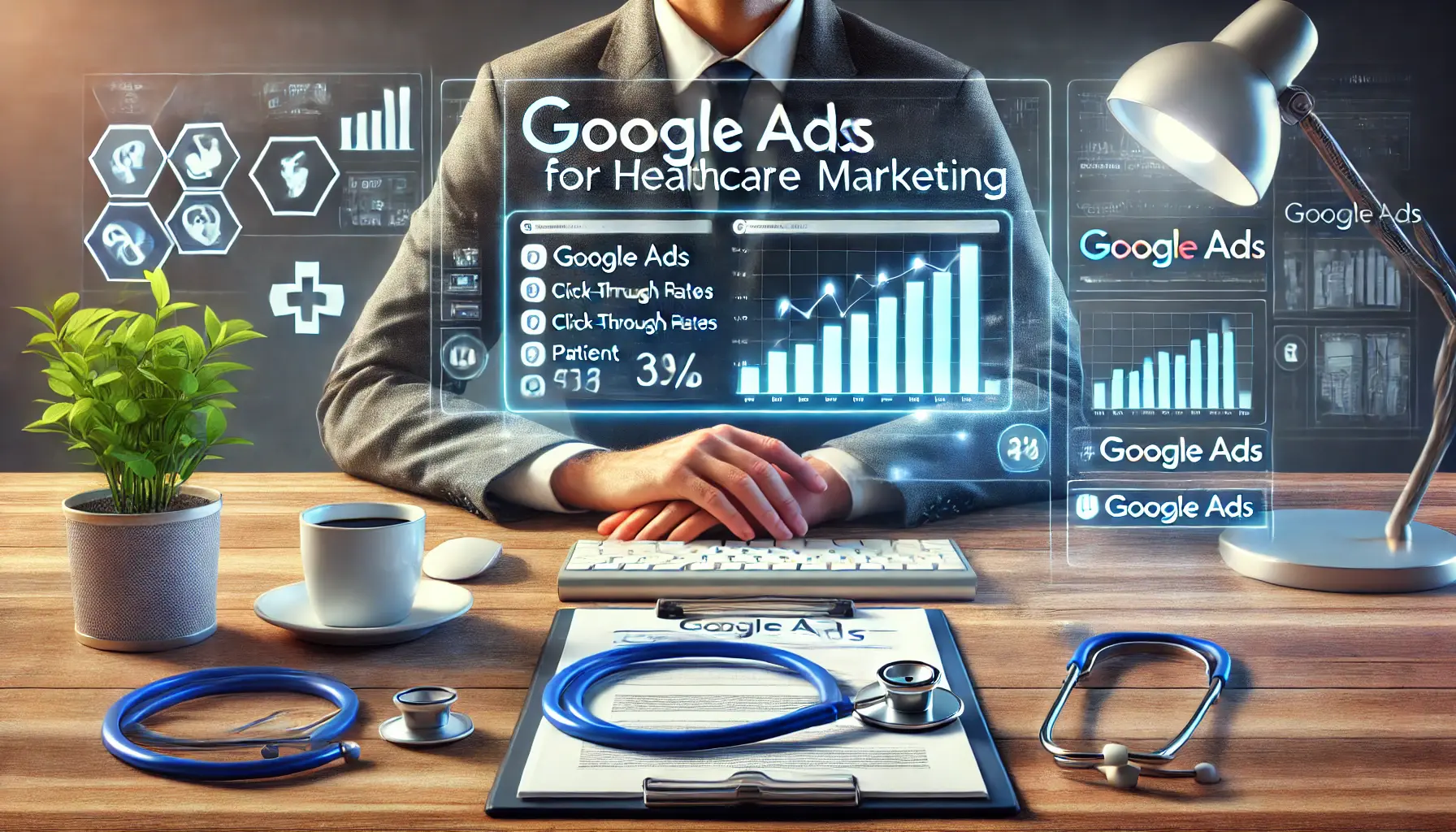
Maximizing success: Leveraging Google Ads for effective healthcare marketing.
Maximizing the Potential of Google Ads for Healthcare Marketing
Google Ads has emerged as a transformative tool for healthcare providers, offering unparalleled opportunities to connect with potential patients, enhance online visibility, and grow medical practices.
This article has explored the key components of effective Google Ads campaigns, providing actionable insights for doctors and healthcare marketers.

Leveraging Google Ads: Maximizing visibility and patient acquisition for doctors.
The Core Benefits of Google Ads for Doctors
Google Ads allows healthcare professionals to precisely target their audience, ensuring that their services reach those who need them most.
By leveraging features like keyword targeting, A/B testing, and ad extensions, doctors can optimize their campaigns to maximize patient engagement and ROI.
- Precise targeting ensures ads appear to relevant audiences.
- Enhanced online visibility attracts more patients.
- Cost-effective strategies improve advertising returns.
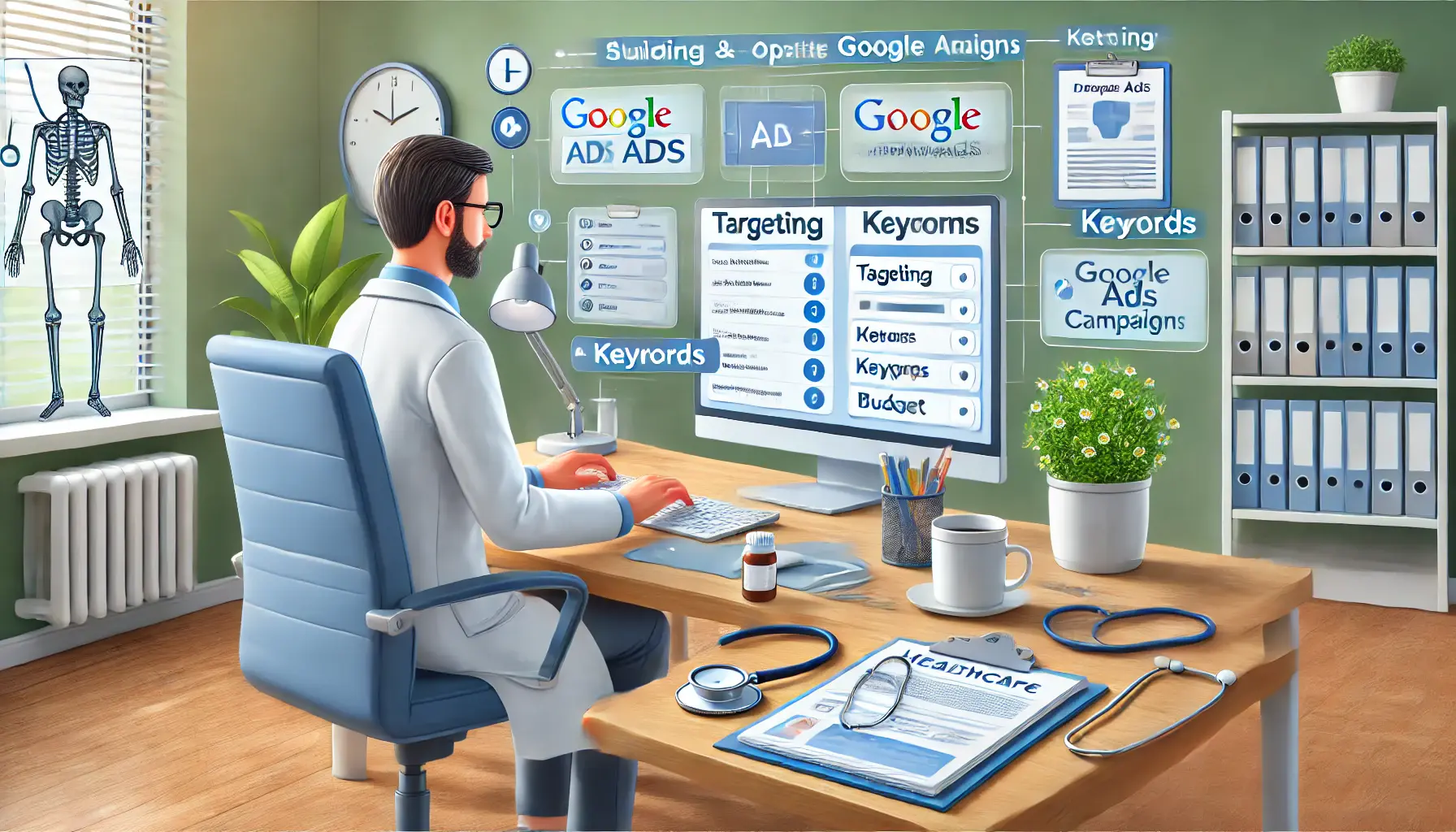
Optimizing success: The process of building and refining Google Ads campaigns for healthcare.
Steps to Build and Optimize Google Ads Campaigns
A successful Google Ads strategy involves multiple well-coordinated steps:
- Identify your audience: Define demographics, location, and patient needs.
- Choose the right keywords: Utilize tools like Google Keyword Planner to find terms potential patients search for.
- Create compelling ads: Highlight unique offerings and include clear calls-to-action.
- Optimize landing pages: Ensure relevance, clarity, and strong conversion elements.
- Monitor and refine campaigns: Use analytics tools to measure performance and make data-driven adjustments.

Building trust: Ensuring compliance in healthcare marketing for ethical practices.
Maintaining Compliance and Building Trust
Compliance with healthcare advertising regulations is essential for building trust and avoiding legal complications.
By adhering to Google Ads policies, HIPAA requirements, and data privacy standards, healthcare providers demonstrate their commitment to ethical practices and patient care.
Prioritizing secure data handling, transparency in privacy policies, and patient-centric advertising fosters stronger connections with audiences and reinforces a practice’s credibility.

Sustainable growth: Leveraging Google Ads for continuous improvement in healthcare marketing.
The Path to Sustainable Growth with Google Ads
By continually measuring ROI and analyzing campaign performance, doctors can refine their marketing strategies to focus on what works best.
This iterative approach ensures sustainable growth and continuous patient acquisition, making Google Ads indispensable in modern healthcare marketing.
Google Ads empowers doctors to expand their reach and establish long-lasting relationships with patients by delivering timely, relevant, and trusted healthcare services.
Google Ads empowers doctors to expand their reach, optimize patient targeting, and establish long-term growth through strategic digital marketing.
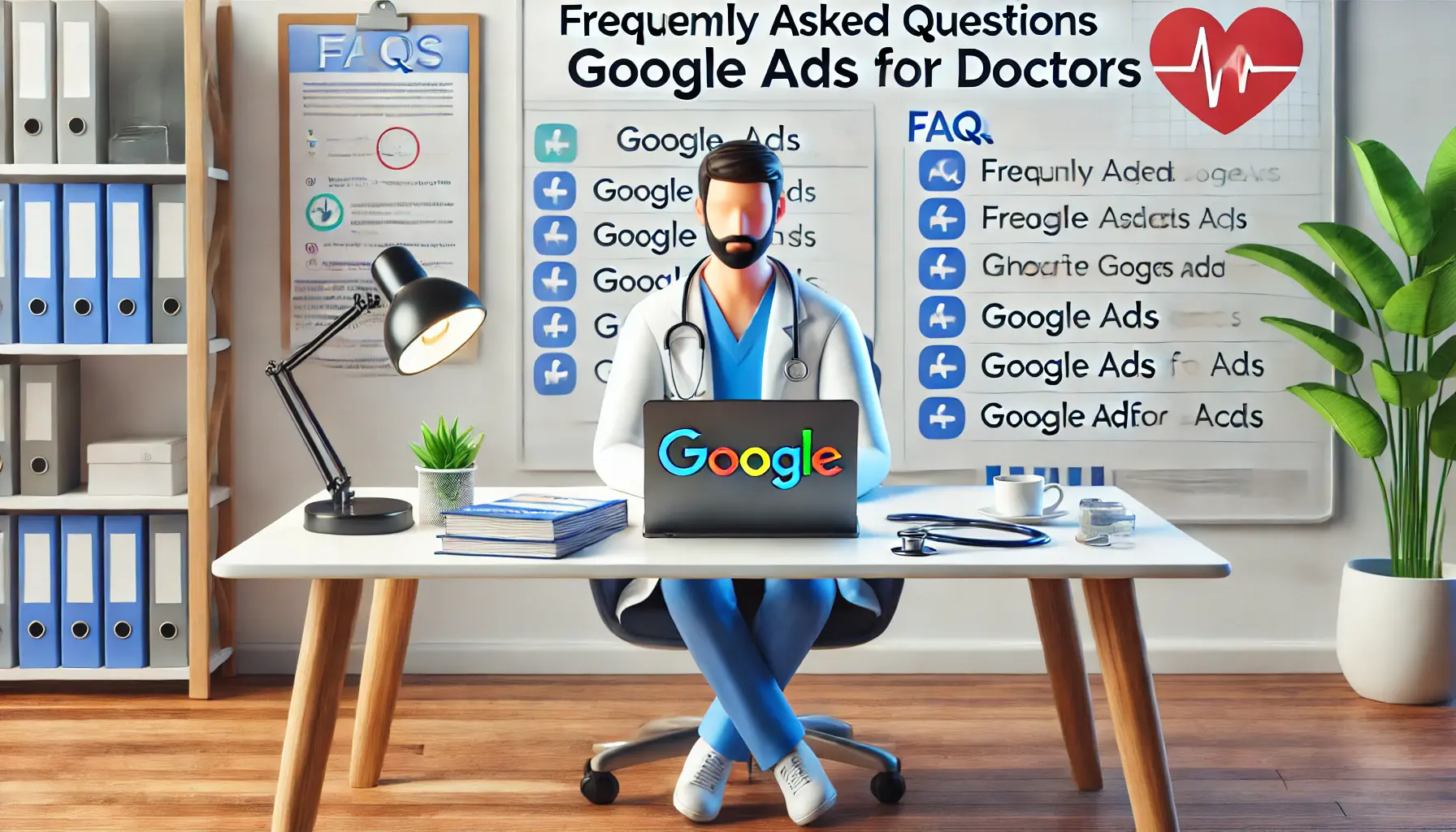
undefined
Your campaigns can be managed by an agency specialized in Google Ads, check out our service page.
Frequently Asked Questions about Google Ads for Doctors
Google Ads can significantly enhance a doctor’s online presence and patient acquisition by targeting specific demographics and search behaviors, leading to increased visibility and engagement with potential patients.
By targeting specific keywords and demographics, Google Ads connects doctors with potential patients actively searching for healthcare services, increasing the likelihood of attracting new patients.
The budget depends on factors like competition and desired reach.
Starting with a conservative budget and adjusting based on campaign performance is advisable.
Google enforces strict policies for healthcare ads, requiring compliance with local laws and industry standards to ensure ethical advertising practices.
Identifying target audiences, selecting relevant keywords, crafting compelling ad copy, and optimizing landing pages are crucial for a successful campaign.



